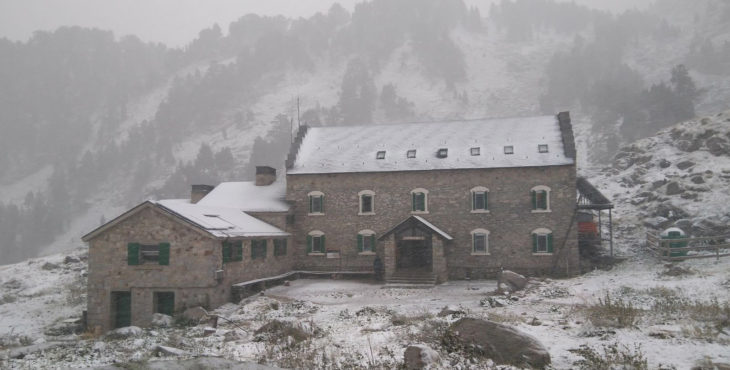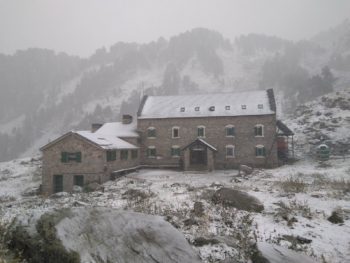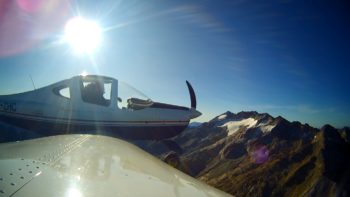In summer, there is always a day when the mountaineers are completely taken aback because it is snowing in Aneto in the middle of August. The is a common occurrence, as it can snow at quite a low altitude (2,000 m) on any given day in September, with this snow hanging around for a few days and making it difficult to climb Aneto.
Carefully plan your ascent
Check the weather forecast before you head to the mountains to ensure that you won’t be taken by surprise. The Spanish State Meteorological Agency’s mountain section and its digital temperature and precipitation modules will provide you with all the information you need to know. However, don’t forget that this is a forecast and not a sure thing.
From September on you, can see the days start to get shorter and the sun takes a less vertical route through the sky, resulting in it not warming you up as much and for less hours each day. Night-time temperatures of close to or even below zero are frequently recorded in both the valley and at higher altitudes (if you want to track the position of the sun, this website might be of interest).
Remember that you can check the refuges’ webcams to take a look at the conditions on the mountain. The two refuges near Aneto are La Renclusa and Cap de Llauset, so check their webcams for more accurate information. On this website, you can also find out more useful information that will help you keep safe, such as the most recent precipitation, wind and temperature figures, as well as the state of the most popular routes.
Act wisely
If you are already out and about and you see that the mountain is covered in snow (this shouldn’t be too much of a surprise), remember that the “first snow”, despite being completely necessary, is usually an obstacle which makes it even more difficult to get to the summit. With just one or two centimetres of snow, the rocks become very slippery. And if the sun melts it throughout the day, at night it can freeze over, making everything even more dangerously slippery. With five centimetres of snow, lots of gaps between rocks are covered and walking is particularly cumbersome, while you are even more likely to trip and fall.
Although warm, layered clothing, gloves and a hat should form part of every mountaineer’s equipment, during this time of year it can prove vital. In the summer we are left flabbergasted by news stories detailing rescues of people with hypothermia, and even people who lose their lives for the same reason in these very mountains.
In September, snowfalls can last a day or two, and in October, three or four. Before you know it, the day comes when the snow stays on the ground until the end of the next spring. This is a natural cycle, one that the glacier needs.





Leave a Reply